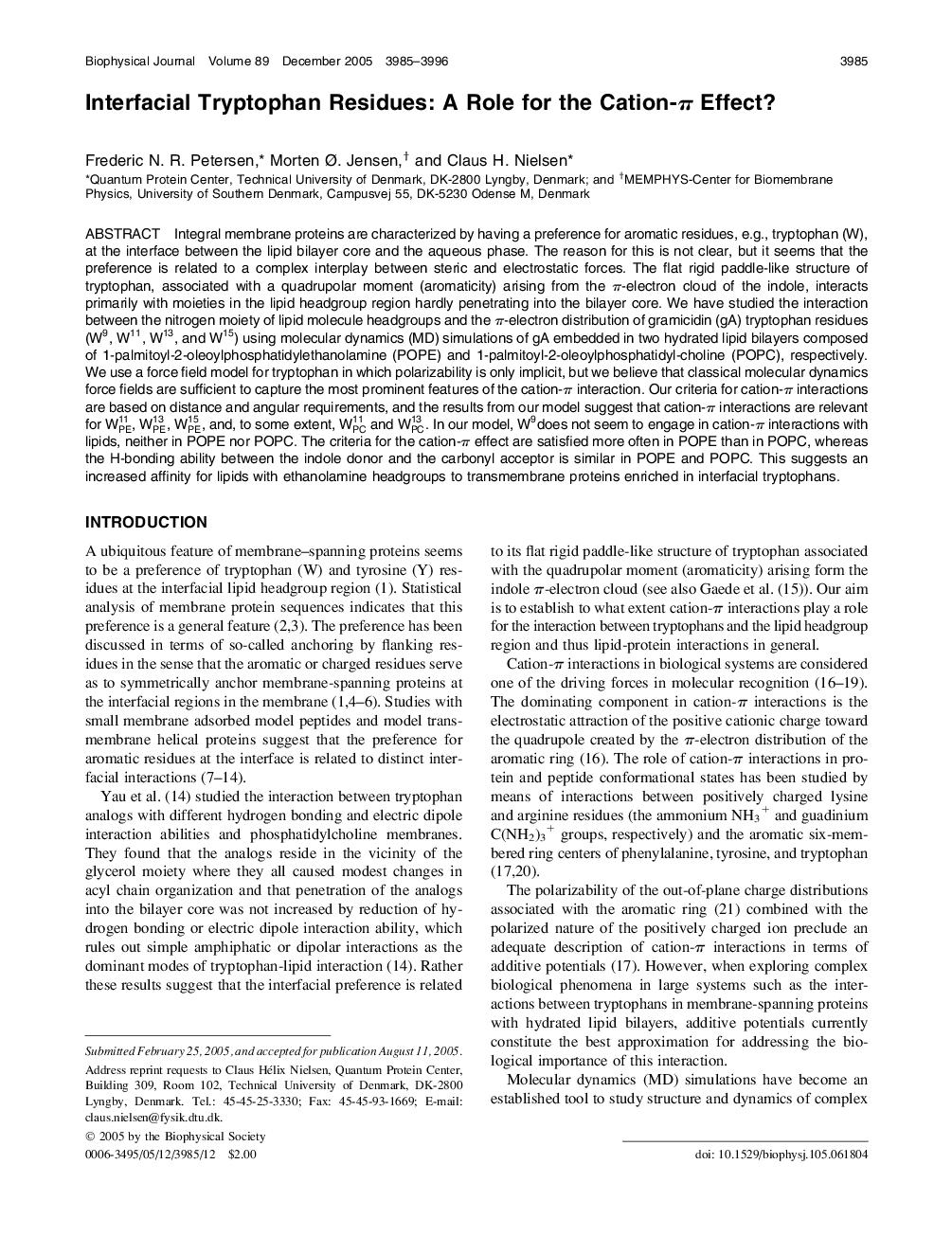| کد مقاله | کد نشریه | سال انتشار | مقاله انگلیسی | نسخه تمام متن |
|---|---|---|---|---|
| 1959747 | 1057945 | 2005 | 12 صفحه PDF | دانلود رایگان |

Integral membrane proteins are characterized by having a preference for aromatic residues, e.g., tryptophan (W), at the interface between the lipid bilayer core and the aqueous phase. The reason for this is not clear, but it seems that the preference is related to a complex interplay between steric and electrostatic forces. The flat rigid paddle-like structure of tryptophan, associated with a quadrupolar moment (aromaticity) arising from the π-electron cloud of the indole, interacts primarily with moieties in the lipid headgroup region hardly penetrating into the bilayer core. We have studied the interaction between the nitrogen moiety of lipid molecule headgroups and the π -electron distribution of gramicidin (gA) tryptophan residues (W9W9, W11W11, W13W13, and W15W15) using molecular dynamics (MD) simulations of gA embedded in two hydrated lipid bilayers composed of 1-palmitoyl-2-oleoylphosphatidylethanolamine (POPE) and 1-palmitoyl-2-oleoylphosphatidyl-choline (POPC), respectively. We use a force field model for tryptophan in which polarizability is only implicit, but we believe that classical molecular dynamics force fields are sufficient to capture the most prominent features of the cation-π interaction. Our criteria for cation-π interactions are based on distance and angular requirements, and the results from our model suggest that cation-π interactions are relevant for WPE11, WPE13, WPE15, and, to some extent, WPC11 and WPC13. In our model, W9W9does not seem to engage in cation-π interactions with lipids, neither in POPE nor POPC. The criteria for the cation-π effect are satisfied more often in POPE than in POPC, whereas the H-bonding ability between the indole donor and the carbonyl acceptor is similar in POPE and POPC. This suggests an increased affinity for lipids with ethanolamine headgroups to transmembrane proteins enriched in interfacial tryptophans.
Journal: - Volume 89, Issue 6, December 2005, Pages 3985–3996